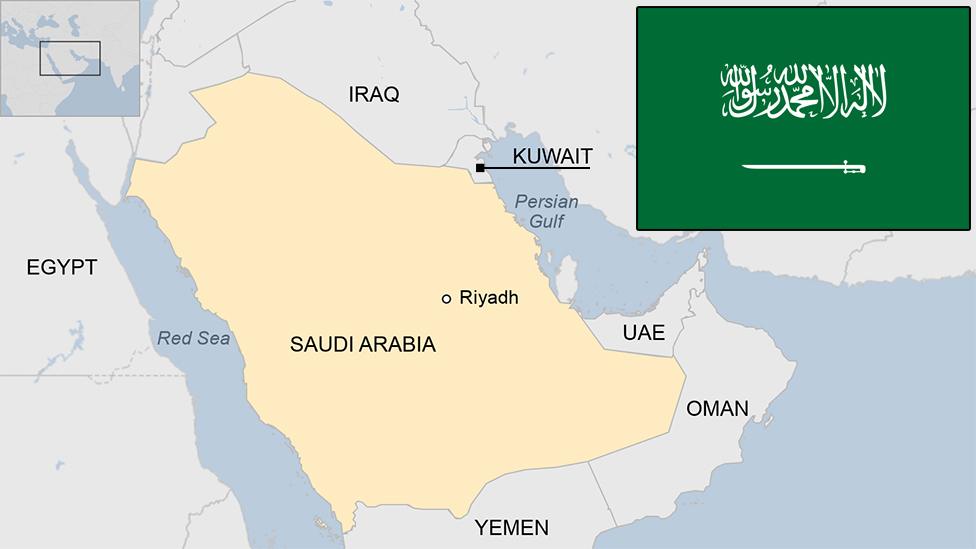Saudi Arabia's new desert megacity
- Published
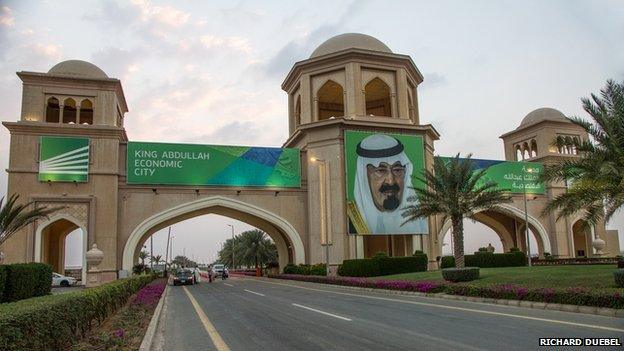
The entrance to Saudi Arabia's newest city
With a flourish of his hand, the uniformed security guard waves us down the private road that leads to the newest city in the Kingdom of Saudi Arabia.
The King Abdullah Economic City, (KAEC, pronounced "cake") is one of four new cities upon which the late monarch pinned his hopes for the future of his realm once the oil runs out.
Peppered with cranes, the city - or building site to be more accurate - lies one-and-a-half hour's drive north of Jeddah between the Red Sea and scrubby desert.
Its future depends on balancing the complex and evolving transport, health, education, housing and employment requirements of the city's projected two million residents.

The new city will cost $100bn to complete
According to Fahd Al-Rasheed, the managing director of Emaar Economic City, the publicly traded Saudi company that runs the entire KAEC project, the new generation of Saudis expect a city that matches the modern lifestyle they have grown used to while studying abroad.
"We're building with the 65% of the population who are under 30 in mind," he explains. "And we have almost 200,000 Saudis studying abroad. Inevitably they are going to change things when they come back."
These statistics are compounded by the fact that more women than men graduate from university. These changing demographics are bringing with them new social demands that will likely revolutionise how the country develops.

When completed KAEC will be larger than Washington DC
Megacity
At 70 sq miles KAEC will eventually be a metropolis slightly larger than Washington DC and at a cost of $100bn (£67bn), mostly from private funding, the King Abdullah Economic City is second to none in the grandeur of its vision.
"We aim to create one of the world's largest ports," says Rayan Bukhari, a young manager at the King Abdullah port.
"We're not competing with Jeddah's Islamic port - but we are going to take business away from Jebel Ali in Dubai. That's because of our quicker, more automated offloading and customs procedure."
According to Mr Bukhari, King Abdullah was determined to involve the private sector in the economic development of the country; casting aside tribal and regional rivalries in the interests of creating a modern business economy.
"Freight arriving at the port will be taken directly to the capital via the new land bridge," he explains, "At the moment lots of products destined for Riyadh are shipped to Dubai, but that will change. They'll be shipped here as it is cheaper - and can be delivered more quickly within the Kingdom."
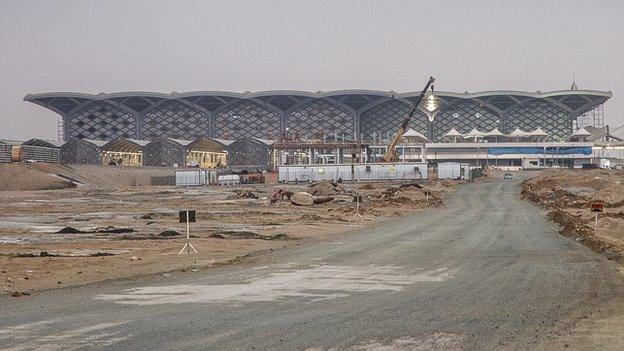
British architect Norman Foster has designed the Haramain railway station
Speed is integral to KAEC's vision for future. With Mecca and Medina on the high speed train network that links KAEC with the two holy cities, well-heeled Umrah (pilgrimage to Mecca) pilgrims are expected to visit the city as they travel from the place where the Prophet was born to the place where he is buried.
"The Haramain station is due to open by the end of the year," says Fahd Al-Rasheed, "That train service will alter a lot of things for us."
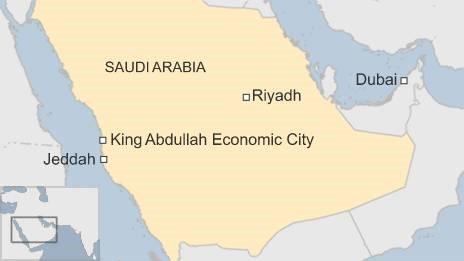
The station is designed by British architect Norman Foster, famed for London's "Gherkin" skyscraper and the Reichstag Dome in Berlin.
It is expected to reduce the journey time from Jeddah to 30 minutes and bring religious tourists to the city on extended pilgrim visas.
And as Jeddah becomes ever more clogged with cars, KAEC claim's it will limit fuel emissions by providing electric cars for use within the city free of charge.
Repeated rethinks
It has, however, not been entirely plain sailing for the country's newest city.
Even though KAEC is developed and managed by the private sector and is listed on the Saudi stock exchange (Tadawul), economic realities in the Gulf have hit home and necessitated a government loan amid the current fall in oil prices and the more widespread economic downturn.
The speed of social change in the kingdom is also making itself felt for what has become a fluid master plan.
"We've altered our plan four times already," confirms Head of Strategic Planning Tareq Salaita, "We may well need to have another rethink."
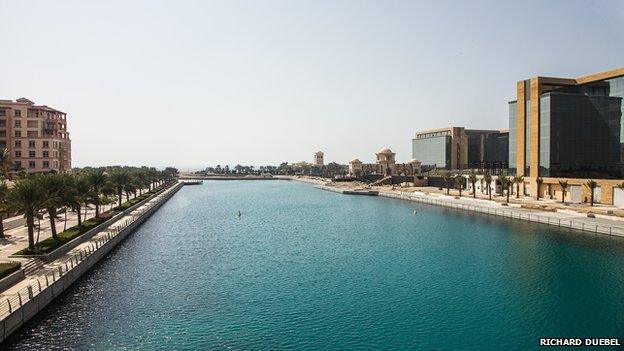
Only 15% of the city has been finished so far
Creating a massive new city that is able to encourage enterprise in a practical way has up-ended the usual rigmarole of applying for permissions.
The government has set up an Economic Cities Authority overseeing all four megacities and dealing with every licence, construction permit and approval needed from different ministries. This time-saving move should help the hundred companies that are setting up in KAEC avoid costly delays.
So far only 15% of the city has been developed - industrial estates, residential districts and public facilities are currently under construction.
Ninety kilometres of roads are already in use but what about the thorny question of women driving? In 20 years when KAEC is due to be completed, will females be behind the wheel?
According to Dania Beidas, who lives and works in the city during the week, in two decades the question may well be irrelevant.
"I hope that we will be allowed to drive here eventually," she says. "But with driverless cars in the pipeline, it may not matter any more."
- Published11 February 2015

- Published4 March 2015

- Published29 August 2023
